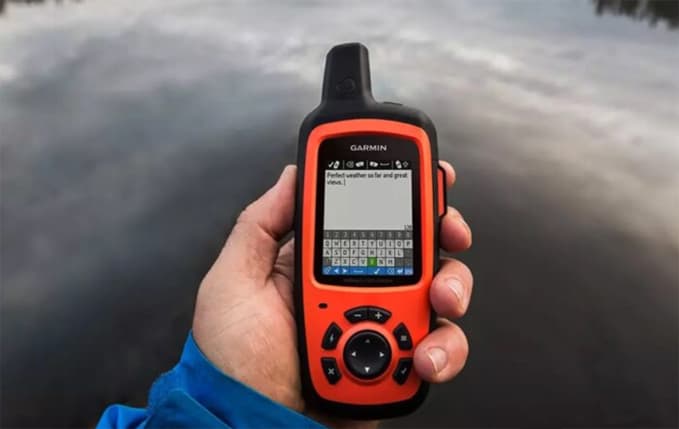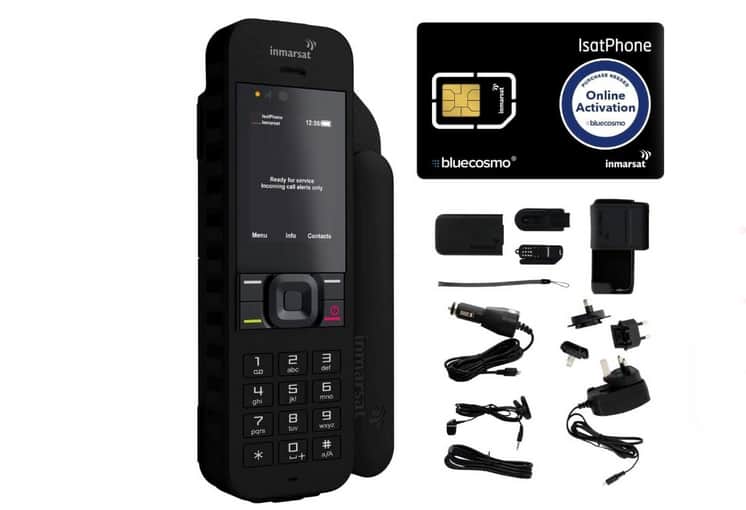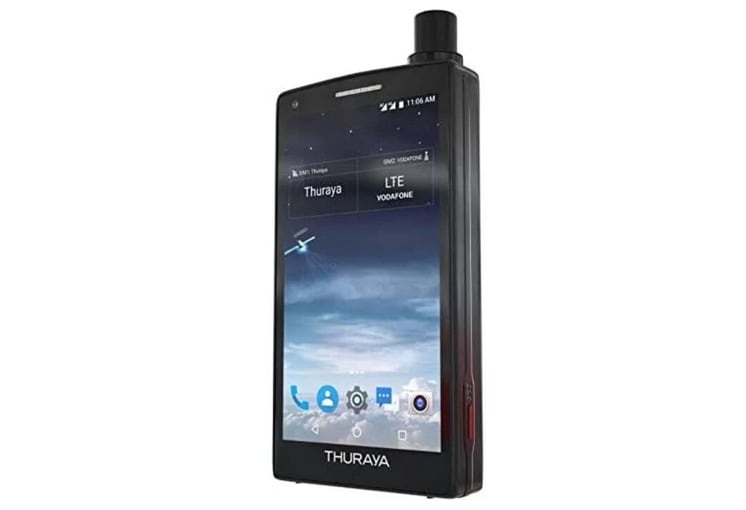
The Best Satellite Phone for Backpacking: Cellular service often disconnects just when things start to get exciting. Once you’re a few miles away from the nearest gas station and getting into your hiking groove, your cell phone will become nothing more than a pricey digital camera.
Many of us venture into the wilderness to disconnect and enjoy some peace. However, the lack of service in remote areas can become problematic when something goes wrong. That’s why it’s crucial to stay connected, and this is where a satellite phone proves invaluable.
When venturing off the usual path, it’s crucial to understand the potential risks that may arise. As you venture into the farthest corners of the earth, you’ll discover the world’s unpredictable nature and, unfortunately, experience a decline in your satellite network.
If you happen to injure your ankle early on during a multi-day hike, it’s more complex than just walking out of there. Unfortunately, regular cell phones won’t be much help in getting assistance or making necessary calls.
A satellite phone is crucial for mountaineering, hiking, or any extreme adventure tourism, regardless of your ailment. In addition, finding a provider that offers dependable voice calling, worldwide coverage, and cost-effective monthly service plans is essential.
Today, we will provide you with valuable information about Satellite Phones and assist you in choosing the most suitable option. Let’s get started and find out about the best phones!
If you’re looking for the perfect satellite phone for your hiking or backpacking adventures, you’ve found the right place! Alright, let’s get moving!
A Word on The Best Satellite Phones
Choosing the right satellite phone for your needs is essential, even if you hope you never have to use it. This way, you’ll be prepared with the right plan and coverage if needed. Satellite phones are usually excluded from a typical backpacking packing list. However, it may be necessary to bring one, depending on your trip.
We will guide you through the advantages and disadvantages of the top satellite phones for backpacking available, ensuring you can find the perfect satellite phone so you will always be prepared when you need it most.
If you want to explore remote locations and stay connected, this article will guide you in choosing the best satellite phone. Whether hiking through wilderness, exploring deserts and safaris, or simply seeking solitude away from civilization, having a digital first aid kit is essential.
The Best Satellite Phone For Backpacking?
A satellite phone is essential for emergencies, even though you hope you never have to use it.
You will only have a little time to wait for faulty satellites to connect when making a call. A dropped call can ruin your trip.
We spent much time away from cell towers curating our list of the top satellite phones. These devices will always be prepared for your needs, as long as you remember to bring the charger! Alright, let’s take a look at our top satellite phone!
1. Inmarsat IsatPhone 2

Inmarsat is a major player in the global satellite phone market, and its flagship phone poses strong competition to the Iridium Extreme, which currently holds the top spot. One of the standout features is the budget-friendly price.
This phone may not have the same impressive features as the industry leader, but it comes at a very affordable price. It’s doubtful that you’ll ever require anything beyond this LsatPhone.
The phone includes a dedicated SOS button that can send your GPS coordinates to get help quickly with the built-in tracker. The emergency center is situated in Texas, which may not be very helpful if you’re in Asia. However, adventurers in North, Central, and South America can rely on a support system that operates in their time zone.
Feel free to browse at your own pace when shopping for the LsatPhone. You might come across some great deals, like getting the phone for free when you buy a year-long plan. This advanced satellite phone is known for its lightweight design and impressive battery life. This phone is perfect for traveling to remote areas. It’s both affordable and reliable.
We highly recommend this satellite GPS phone for travel in the Americas and the Australian outback. They really liked the SOS button because it allowed them to call for help easily and quickly. One advantage was the lightweight design, making it effortless to carry in their packs no matter where they went.
2. Iridium Extreme 9575

This satellite phone is exceptional, thanks to Iridium’s LEO satellite network and impressive battery life. When traveling to remote areas, the Iridium Extreme is unmatched if money is not a concern.
These phones are built with top-notch technology to ensure they can withstand even the most extreme adventures from the inside out. These devices are designed to withstand water, dust, and shocks, ensuring their durability even in tough conditions.
This is backed by complete coverage worldwide, ensuring you’re always connected no matter where you are. That’s one of the reasons why it’s considered one of the top satellite phones.
No other phone can match this device’s reliability, long battery life, rugged design, and Wi-Fi hotspot capability.
Our team appreciates this emergency satellite phone, especially because of its sturdy design. The phone’s durability provides them with added confidence for their backcountry adventures. Furthermore, they verified the accuracy of the coverage claims, which further bolstered their trust in the phone.
3. Iridium 9555

With our second Iridium option, you can enjoy the full satellite coverage of Iridium satellites at a more affordable price compared to the extreme 9575. This phone may not have the same level of military-grade protection as its extreme older brother, but it is not fragile.
This satellite phone offers a wide range of features from the mobile phone industry, making it easy to use with a user-friendly interface and a hands-free calling option with a headset.
Feeling like a wilderness explorer straight out of Hollywood, you can easily find the reception with clunky antennae, whether halfway up the Cotopaxi or down the Amazon River.
This device is durable, compact enough to fit in any day bag, and offers long battery life for extended call time. This satellite phone is perfect for countless adventures, with the added bonus of a one-button emergency ping.
Our team found this GPS satellite phone to be the ideal choice for those seeking a compact and efficient option. They were impressed by its compact size and user-friendly design, which is especially crucial in emergencies.
4. Globalstar GSP-1700

Globalstar, the most affordable satellite phone available, is currently addressing the challenges with its satellite phone service.
Although the coverage in North America is impressive, there are vast stretches of breathtaking scenery that Globalstar still cannot reach. Due to limited coverage, it is not advisable to bring this satellite phone on trips to Asia or Africa.
If you primarily travel within the United States or Europe, this phone should suffice. It is also a cost-effective choice for those who only occasionally require a satellite phone.
This marks the company’s initial venture into the realm of smartphones, having previously focused solely on satellite messengers. This device is equipped with advanced technologies that will continue to improve in the coming years. The current version already offers excellent features for texting, email, and coordinate sharing.
If you’re looking for an affordable satellite phone, we highly recommend this model. While it may lack certain features, such as full waterproofing, it still provides excellent coverage in popular travel destinations and lightning-fast data speeds.
5. Thuraya X5 Touch

This satellite phone includes popular smartphone features like a touchscreen and 4G LTE capabilities. Thuraya has introduced a satellite phone packed with features, although it may differ from an iPhone.
However, it has not yet achieved global accessibility. Unfortunately, Thuraya does not offer this phone service in North or South America.
If you choose to stay in the old world, this is a great companion to have. This phone has a 5.2” HD touchscreen, runs on an Android operating system, and comes with a camera. This phone has two SIM slots, enabling you to switch between GSM cell networks and satellite service effortlessly.
Initially, the idea of using a touchscreen phone during your challenging outdoor expeditions may seem like a surefire way to end up with a shattered screen. The X5 touch also comes with gorilla glass protective coating and is IP67-certified for water and dust resistance. This device may appear delicate, but it is designed to withstand tough environments.
One drawback of Thuraya is that it operates on a different satellite technology than Globalstar phones, resulting in a limited coverage map. Unfortunately, it won’t be compatible in North America.
Before venturing into the woods, checking the phone’s current coverage capabilities is essential.
The Thuraya falls short in both areas and must stand out. Suppose you prioritize a user-friendly interface on your smartphone and desire a versatile device that can handle calls and texts in any situation. In that case, you won’t need to carry anything else.
Our team was excited to try out this phone and appreciated its extra features, such as the touchscreen, camera, and dual SIM slots, which set it apart from a standard satellite phone. This camera may appear unnecessary, but it serves a different purpose than just taking selfies. Our team believes it provides an additional layer of security in situations where individuals may struggle to describe their emergencies accurately.
Satellite Messengers For Backpacking
There are many situations where a phone call is unbeatable. Emergencies often come with a fair share of disorder. By making a single call, you can effectively communicate the urgency of your emergency, provide your precise location, and clearly state your requirements for a prompt evacuation. This method proves more efficient than relying on text messages sent to foreign aid workers.
However, they often come with additional costs and complicated plans for a device that you may not end up using. Satellite Messengers offer a cost-effective alternative to satellite phones while providing the same level of connectivity.
If you have no intention of free soloing challenging routes or finding yourself stranded without access to a gas station for a week, then this is for you. If that’s what you’re looking for, a Satellite Messenger can help you stay connected with the outside world through text or email, and it won’t break the bank.
Satellite messengers are more convenient to bring to certain countries. If your preferred location has restrictions on satellite phones, the messengers we discuss below are excellent legal alternatives for communication.
1. Garmin InReach – Mini 2
Significantly more affordable than other satellite phones, this device is compact and perfect for coordinating pick-up times while descending the mountain.
The Mini moniker means business. This item is small enough to fit comfortably in your child’s hand. This satellite communicator is incredibly compact yet still maintains its durability and performance, making it one of the smallest options available from Garmin.
To use your phone, you’ll need to get a subscription plan. The good news is that the plan also includes some extra benefits. Transmitting your GPS location to a Garmin call center is incredibly simple. Just press a button, and you’re good to go.
Texting can be slow since you must press just two buttons to navigate the entire alphabet. With the abundance of texts being exchanged, it can get overwhelming to keep track of them all. That’s why it’s best to rely on your handheld device for straightforward communication.
Despite its limited capabilities, it’s much more affordable than a satellite phone.
Our team found this compact device to be imposing. They believe it is the ideal companion for those who value simplicity and efficiency. They appreciated the messenger’s durability and user-friendly design.
2. Garmin GPSMAP 65s
The GPSMAP 65s offers more features compared to the Mini. It provides current weather updates, a compass, route planning, and, most importantly, additional buttons. This satellite messenger is perfect for staying connected with loved ones or reaching out for assistance when needed.
The device offers the same one-button emergency beacon services as other Satellite messengers. Additionally, its larger interface simplifies the process of sending more complex messages. This device’s emergency beacon sends a signal to rescuers every 10 minutes, ensuring that you always have an up-to-date path out of your difficult situation.
These Garmin Satellite Messengers are compatible with the Iridium satellite network, ensuring reliable connectivity no matter where your journey leads. Their accompanying app sets them apart.
Syncing your traditional smartphone to one of these satellite messengers allows you to use a full keyboard when sending satellite messages.
Our team found this messenger to be the perfect combination of a compact and durable design while offering all the phone features. The mapping feature was incredibly useful for messengers, allowing them to quickly navigate and assist in tricky situations without making a phone call for help.
What is a Satellite Phone?
A satellite phone uses satellites to communicate worldwide with landline, cellular, or other satellite phones. It is beneficial in emergencies. Many remote areas need landline or cellular telephone networks. When responders work together to coordinate response and recovery efforts in these regions, they can utilize satellite mobile phones for emergency communications. Satellite phones are incredibly useful in areas where existing networks may be compromised due to natural disasters like severe weather or earthquakes. Networks can also suffer damage from artificial incidents, such as chemical, biological, radiological, nuclear, or explosive events. During emergencies, satellite phones can be used to maintain command and control functions when regular communication systems are down.
Satellite phones are easy to use, but they come at a higher price than cell phones. Although the majority of satellite phones cost between $400 and $1,000, a few models are priced higher. The usage charges are typically $1 per minute.
How do Satellite Phones work?
A satellite phone is a device that uses satellites to connect with landline, cellular, or other satellite phones. According to the US Department of Homeland Security’s website, the satellite receives voice or text information signals from the sending phone. It transmits them back to Earth to a receiving satellite phone.
A satellite phone has an antenna that can transmit and receive signals in all directions or focus on a specific direction. For satellite phones to work, they need a clear sky view. Satellite phones have limited functionality indoors. Nevertheless, they should work if they are placed close to a window. Satellite phones offer communication capabilities for ships, planes, vehicles, ground-based phones, and command centers.
A recent study published in the Journal of Information Technology Management explains how satellite phones work. When a user makes a call, the closest satellite receives the call and verifies the user’s identity through the nearest gateway on Earth.
If the destination phone is connected to the public switched telephone network (PSTN), the call is routed to the nearest gateway and consecutive PSTN. When the destination phone is another satellite handset, the transmission efficiency and quality improve since the call routing happens exclusively through satellites.
How an Iridium Satellite phone works
Satellite phones rely on geosynchronous equatorial orbit (GEO) or low-Earth orbit (LEO) satellites. Geostationary satellites are incredibly convenient as they hover around 36,000 kilometers above the Earth’s equator, staying put in the sky and offering almost uninterrupted global coverage with just a few satellites. Nevertheless, using GEO satellite phone systems can result in a noticeable delay during phone calls or when using data services because of the long signal transmission distances.
On the other hand, LEO satellites circle the Earth at lower altitudes, ranging from 780 to 1,500 kilometers. Unlike geosynchronous satellites, LEO satellites move about the ground. A geosynchronous orbit of a satellite means that it has the same orbital period as Earth’s rotation on its axis.
Ensuring a constant line-of-sight between satellites and coverage areas is crucial. A pass of an individual LEO satellite usually offers a coverage window of four to 15 minutes, depending on the satellite’s position and the user’s phone. Thus, a network of 60 satellites is necessary to ensure uninterrupted coverage. LEO satellites have the benefit of requiring less powerful amplifiers for successful transmission than GEO satellites. On the downside, LEO data transmission speeds are considerably slower than GEO systems.
How We Tested This Gear
Testing travel and outdoor gear is an approximate science. With our team’s extensive experience, we are well-equipped to handle that, and we are quite skilled at it!
When we test a piece of gear, one of our team members takes it out for a spin and thoroughly tests it. When selecting the best satellite phone, we considered multiple factors to determine our final choices.
Weight and packability play a crucial role in decision-making, particularly for hiking and backpacking enthusiasts who prioritize keeping their packs as light as possible. We also considered its primary purpose, so when evaluating satellite phones, we assessed factors such as range, battery life, technology type, and user-friendliness.
Price was another important factor in making the final decision. Higher-priced items receive closer scrutiny, while more affordable options are given some leeway.
Final Thoughts: Which Satellite Phone is the Best?
That’s everything you need to know about the best GPS satellite phones!
Satellite phones may not offer the same advanced features as modern cell phones, but their technology proves invaluable in critical situations. They are an excellent addition to your backpacking gear, especially when venturing into remote areas.
We believe the Iridium Extreme 9575 is the best phone for any itinerary. It is lightweight, offers worldwide satellite coverage, and is built with highly durable materials.
This compact and user-friendly satellite phone makes it perfect for any adventure. It’s reliable and easy to use, allowing you to stay connected wherever you go.
If you’re looking for an affordable option, the Inmarsat IsatPhone 2 is a great choice. It offers reliable coverage and long battery life, all while being budget-friendly.
No matter which phone you decide on, rest assured that you’ll have a reliable SOS feature to keep you safe in case of emergencies. Remember to prioritize safety while hiking, pack for any weather, and always have a backup plan.



